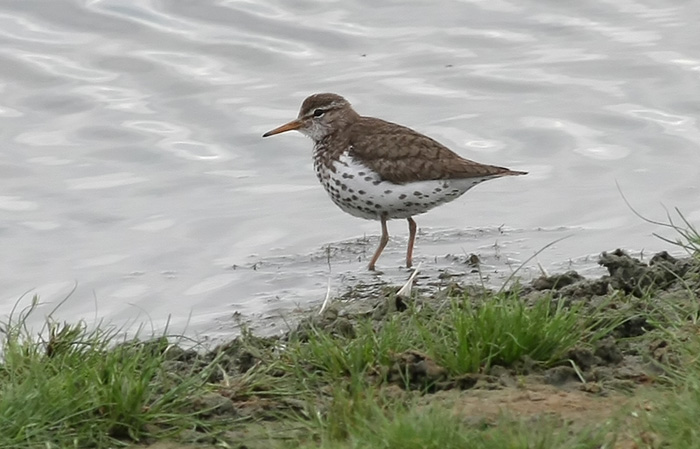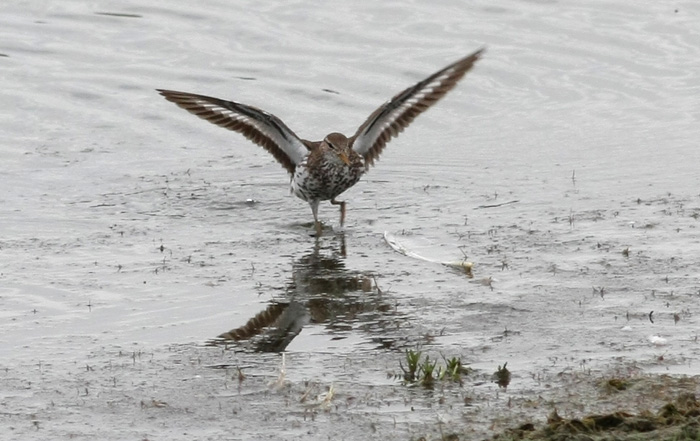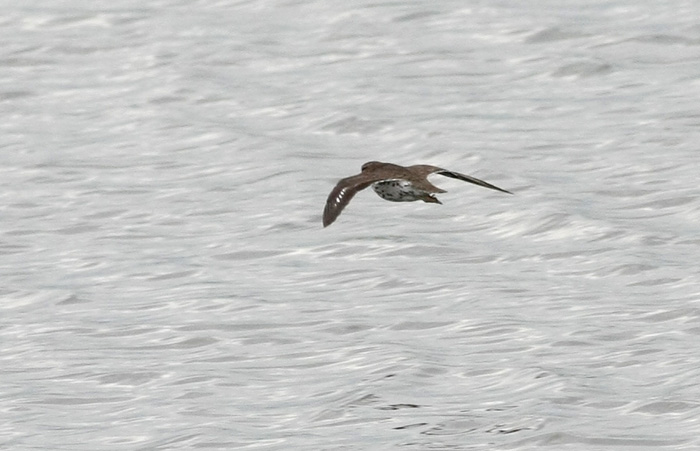
In the morning of Saturday 30 July 2011 Joost Simons & Michel Krijnen discovered a Spotted Sandpiper Actitis macularius in a small pond near Rilland (province Zeeland) . He put the record on the recording site waarneming.nl and a few hours later it became widely known. The first birders that were present saw the bird at quite a distance and were not sure and passed this doubt on the Dutch Rare bird Alerts. Almost 20 minutes later, they saw the bird at a much closer range and then they could see all diagnostic field marks. In hours 100+ birders came from all over the country.
When at closer range, the bird was easily identified by the spotted underside, yellowish base of the bill, the more pink-yellow feet, shorter tail projection and shorter white wing-bar not reaching the body as with Common Sandpiper Actitis hypoleucos. It stayed till the next day on 31 July, so in the end 300+ birders could tick this lovely sandpiper.



It was accepted as the third record for the Netherlands. Although regularly seen in Great Britain and Ireland, Spotted Sandpiper seemed to have trouble finding their way to the Netherlands. The first record was an adult bird collected on Vlieland on 18 July 1975 (see here for a picture of the skin), the second record was a juvenile at Diemen between 23 and 28 August 1980. Hopefully more will be found the next years!
Go to the main-index, the 2011-index or the next new species, the Long-tailed Shrike?